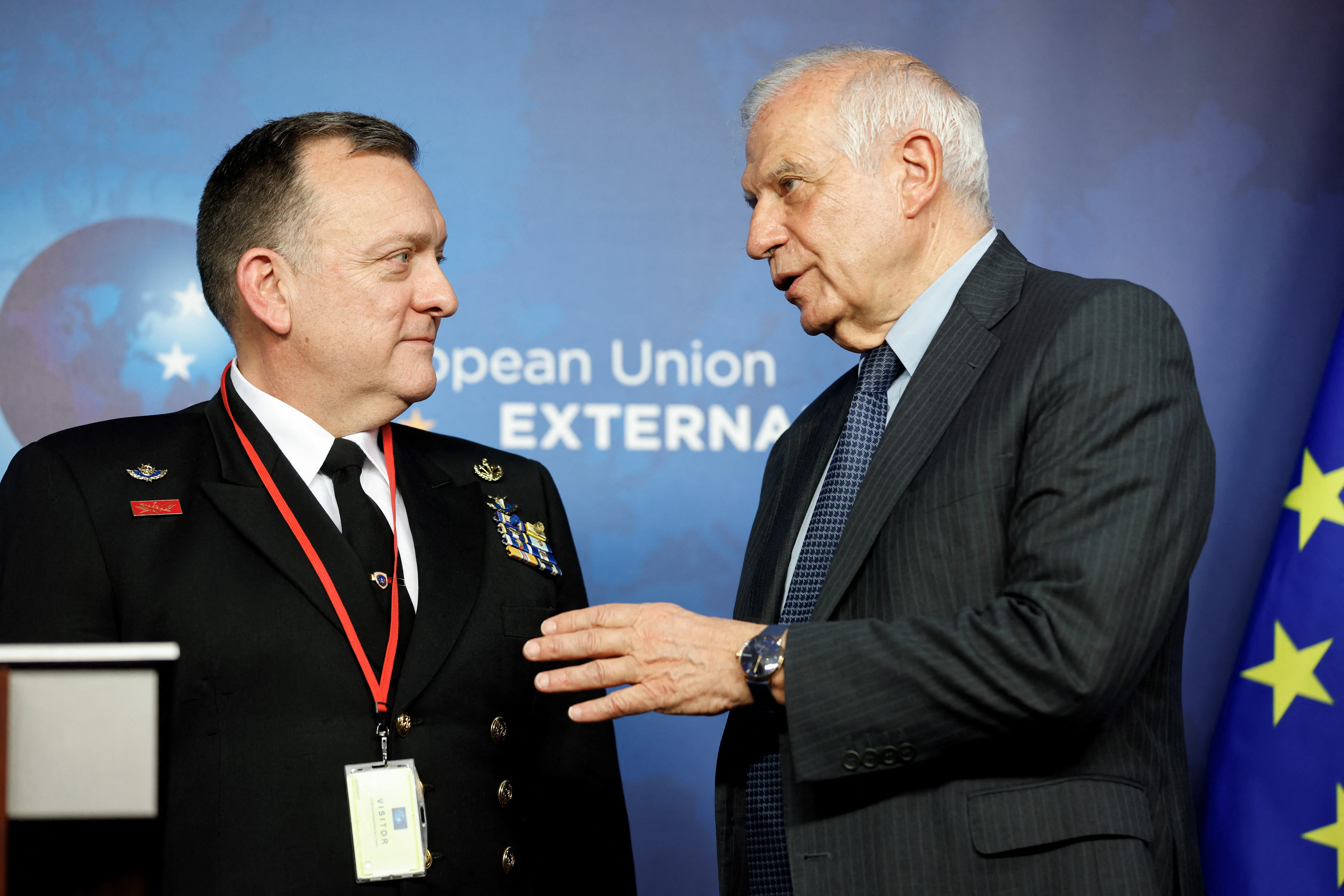Brussels – An average of nearly two thwarted attacks per week; since Feb. 19 – the day of the launch of Aspides – to date, the European naval mission in the Red Sea has repelled 11 offensives by pro-Iranian Yemeni Houthi. So far, the four frigates deployed in the area have escorted 68 merchant ships along the trade artery connecting the Mediterranean to the Indian Ocean. All requests for protection have been picked up, but “if the number increases, our assets present in the area will also have to increase,” the operation’s top brass warns.
From the EU capital, the High Representative for Foreign Affairs, Josep Borrell, and Aspides’ strategic commander, Rear Admiral Vasileos Gryparis, drew the first summaries of the Greek-Italian-led mission to safeguard shipping companies and international trade, endangered by the Houthis, who in response to the outbreak of conflict in Gaza have declared war on all merchant ships heading to Israel.

Military actions by the Shiite group that governs parts of Yemen have forced many ships to circumnavigate Africa and round the Cape of Good Hope to reach the East, making voyages to the East almost two weeks longer. “The cost of a container from China to Europe has doubled. Insurance on shipments has increased by 60 percent,” Borrell said. While before the crisis, 13 percent of world trade passed through the Red Sea, “today only half of the 70 ships a day that normally used the Suez Canal” still choose that route.
In total, 19 EU countries are contributing to the mission, with personnel deployed at the headquarters in Larissa, Greece, or in the area of operations under the leadership of the Italian Navy’s Rear Admiral Stefano Costantino. A vast area, “twice the territory of the 27 Member States,” Gryparis said. The area goes from the Red Sea through the Gulf of Aden, the Arabian Sea, the Sea of Oman, and part of the Indian Ocean. “To go from one end of the area to the other, it takes ten days. To go beyond the most risky area it takes two days,” the Greek rear admiral explained. It is impossible for four frigates to cover it all: that’s why, for now, Aspides has concentrated “in the high-risk area,” in the southern part of the Red Sea.
Meanwhile, Aspides cooperates with other operations already deployed on the ground, Borrell pointed out. The other EU missions, Agenor and Atalanta, with which it “cooperates closely,” and with Prosperity Guardian, the U.S. mission supported by some EU capitals. Borrell once again emphasized Aspides has a purely defensive mandate: “It is not engaged in any operation against the Houthis on the ground,” he said as if to distance himself again from the raid that the Washington-led international coalition launched on several Houthi bases this winter. For Borrell, the EU mission is “clear proof of our willingness and ability to strengthen international security. It is a concrete example of how the EU acts as a security provider.”
According to Gryparis, there has already been a “small reduction in attacks,” but it is “still too early to say whether Aspides has had an impact on the situation.” If shipping companies regained confidence, there would be an increase in requests for protection. That is why there has already been a reflection on the need to “increase the capacity” of the operation, with the Rear Admiral pointing out that he has already made “requests for specific capabilities” to EU Member States, particularly for “logistical support.” Borrell added that was a willingness to increase medical capabilities “in case of need.” For the initial one-year mandate, the EU Council allocated €8 million to cover the common costs of the mission.
English version by the Translation Service of Withub









